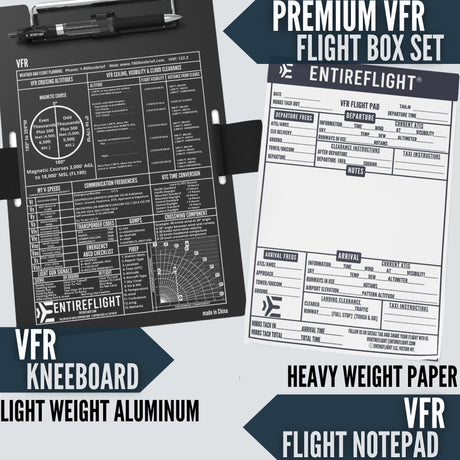As you fly over the vast expanse of land, you may notice clusters of planes parked in seemingly random locations. These are known as airplane graveyards, also called boneyards. These sites are where retired or decommissioned aircraft are stored, waiting to be either scrapped or repurposed.
Airplane graveyards can be found all over the world, from the deserts of Arizona to the forests of Sweden. These sites serve as a temporary home for planes that have reached the end of their useful life. Some of the planes are parked there because they are no longer economical to operate, while others are waiting to be sold or leased to other airlines. In some cases, planes are stored in airplane graveyards for years, waiting for a new owner or a new purpose.
What Are Airplane Graveyards
If you've ever flown on a commercial airline, you've probably wondered what happens to the planes when they're retired from service. The answer is that many of them end up in airplane graveyards, also known as aircraft graveyards or boneyards.
An airplane graveyard is a storage facility for aircraft that are no longer in use. These facilities are usually located in dry, arid regions because the dry air helps to prevent corrosion and rust. Some of the most well-known airplane graveyards are located in the deserts of the southwestern United States, including the Mojave Desert in California and the Davis-Monthan Air Force Base in Arizona.
Airplane graveyards serve a variety of purposes. Some planes are stored there temporarily while they're being repaired or refurbished. Others are kept there until they can be sold or scrapped. Some planes are even used for spare parts to keep other planes in service.
The retirement of an airplane is a complex process that involves many different factors. Airlines must take into account the age of the plane, the number of flight hours it has accumulated, and the cost of maintenance and repairs. When a plane is retired, it is usually stripped of its valuable components, such as engines and avionics, before being sent to an airplane graveyard.
Location of Major Airplane Graveyards
If you're interested in seeing where airplanes go to die, there are a few places around the world where you can find airplane graveyards or boneyards. Here are some of the most well-known locations:
United States
The United States is home to several aircraft boneyards, with the most famous one being the Davis-Monthan Air Force Base in Tucson, Arizona. This boneyard covers over 2,600 acres and holds more than 4,000 retired military aircraft. Other notable boneyards in the US include the Roswell International Air Center in New Mexico, the Mojave Air and Space Port in California, and the Southern California Logistics Airport in Victorville, California.
Rest of the World
Outside of the US, one of the largest airplane graveyards is located in Alice Springs, Australia. This boneyard is home to over 100 aircraft, including several large commercial airliners. In Spain, the Teruel Airport has become a popular location for aircraft storage and maintenance, with over 100 aircraft currently stored there.
Sea Graveyards
When airplanes are no longer needed, they can also be retired to the sea. The US Navy and Coast Guard have several locations where they intentionally sink decommissioned ships and aircraft to create artificial reefs. One such location is the USS Oriskany, which was intentionally sunk off the coast of Florida in 2006.
Desert Graveyards
Deserts are also popular locations for aircraft boneyards due to the dry climate and lack of humidity. The Sonoran Desert in Arizona is home to several aircraft boneyards, including the Pinal Airpark and the Kingman Airport. The Cotswold Airport in England is another popular location for aircraft storage and maintenance in a desert-like environment.
Aircraft Boneyards in News
Aircraft boneyards are often in the news when large numbers of aircraft are retired or when a particular aircraft is retired. For example, in 2020, Delta Air Lines retired its fleet of Boeing 777 aircraft due to the COVID-19 pandemic, and many of these planes were sent to boneyards for storage and eventual disposal.
Overall, airplane graveyards are fascinating places to visit if you're interested in aviation history and the life cycle of aircraft.
Types of Aircrafts in Graveyards
When aircrafts reach the end of their lifespan, they are often retired to airplane graveyards. These graveyards are home to various types of aircrafts, including military planes, commercial airliners, and World War II aircrafts.
Military Aircraft
Military aircrafts are a common sight in airplane graveyards, with many decommissioned planes being retired to these facilities. These aircrafts include the B-52 Stratofortress, which has been in service since the 1950s and is still used by the US Air Force today. Other military planes that can be found in these graveyards include fighter jets, transport planes, and reconnaissance aircrafts.
Commercial Airliners
Commercial airliners are also frequently retired to airplane graveyards. These aircrafts include planes from major airlines such as Delta, American Airlines, British Airways, and Lufthansa. Many of these planes are retired due to their age or high maintenance costs. Some of the most common commercial airliners found in these graveyards include the Boeing 747 and the Concorde.
World War II Aircraft
Airplane graveyards are also home to many World War II aircrafts, including the B-29 Superfortresses. These planes were used extensively during the war and played a crucial role in the Allied victory. Today, many of these planes are retired to graveyards where they are preserved for historical purposes.
In addition to full aircrafts, airplane graveyards also house various parts, spare parts, engines, and hardware. These parts can be used for repairs or to build new aircrafts. Overall, airplane graveyards are an important part of the aviation industry, providing a place for retired aircrafts to be preserved and recycled.
Maintenance and Preservation
Aerospace Maintenance and Regeneration Group (AMARG)
One of the largest airplane graveyards in the world is the Aerospace Maintenance and Regeneration Group (AMARG), which is located in Tucson, Arizona. The 309th Aerospace Maintenance and Regeneration Group (AMARG) is responsible for the storage and maintenance of thousands of military aircraft, including planes, helicopters, and drones.
Long Term Storage
One of the main goals of airplane graveyards is to provide long-term storage for aircraft. This involves keeping the planes in a low-humidity environment to prevent corrosion and moisture damage.
Corrosion and Moisture
Corrosion and moisture are two of the biggest threats to aircraft in storage. To prevent these issues, planes are often stored in sealed containers or covered with protective materials. Additionally, the storage area is typically kept at a low humidity level to prevent moisture from accumulating on the planes.
Parts Reclamation
Another important aspect of airplane graveyards is parts reclamation. Many of the planes stored in these graveyards still have usable parts that can be salvaged and reused. Parts reclamation facilities are responsible for removing these parts and preparing them for reuse.
Identification and Tracking
With so many planes stored in one location, it can be difficult to keep track of everything. To help with this, airplane graveyards use identification and tracking systems to keep tabs on each plane and its location. This helps ensure that the planes are properly maintained and that parts are easily accessible when needed.
Tours and Museums
If you're interested in seeing airplane graveyards up close, there are several tours and museums that offer opportunities to do so. One of the most well-known airplane museums in the world is the Pima Air & Space Museum in Tucson, Arizona. The museum has over 300 aircraft on display, including many that are no longer in use and have been retired to the "boneyard."
The museum offers guided tours of the boneyard, where you can see rows upon rows of retired aircraft, including military planes and helicopters. The tour is conducted via bus, and you can take photos from the bus windows. The tour lasts approximately an hour and a half and is a great opportunity to learn about the history of aviation and the role these planes played in various conflicts.
In addition to the Pima Air & Space Museum, there are other tours available that take you to airplane graveyards in various locations around the world. These tours are typically led by knowledgeable guides who can provide insight into the history of the planes and the role they played in aviation. Some tours even allow you to walk among the planes and take photos up close.
If you're unable to visit an airplane graveyard in person, many museums have exhibits that feature retired aircraft. These exhibits often include information about the history of the planes and their role in aviation. Some museums even have interactive exhibits that allow you to experience what it was like to fly in these planes.
Overall, tours and museums are a great way to learn about airplane graveyards and the history of aviation. Whether you're able to visit one in person or explore an exhibit at a museum, you're sure to come away with a greater appreciation for these incredible machines and the role they played in shaping our world.
Tech Innovations in Airplane Graveyards
In airplane graveyards, technology plays a critical role in the dismantling and recycling process. With the need for efficient and environmentally friendly practices, various tech innovations have been introduced to make the process smoother and safer.
One such innovation is the use of drones for inspection and monitoring. Drones equipped with high-resolution cameras are used to inspect the planes' exterior and interior, detecting any potential hazards and damages. This technology has significantly reduced the need for manual inspections, which can be dangerous and time-consuming.
Another tech innovation is the use of robotics for dismantling and recycling. Robots are used to dismantle the planes' components, which are then sorted and recycled. This technology has increased the efficiency of the process while reducing the need for manual labor, making it safer and more cost-effective.
Furthermore, technology is also used for tracking and managing the disposal of hazardous materials. Software systems are used to track the hazardous materials from the planes and ensure that they are disposed of safely and in compliance with environmental regulations.
Overall, technology has revolutionized the airplane graveyard industry, making it safer, more efficient, and environmentally friendly. With continued advancements in tech, it is expected that the dismantling and recycling process will continue to improve, benefiting both the industry and the environment.
Frequently Asked Questions
1 - Are there any airplane graveyards open to public?
Yes, some airplane graveyards are open to the public for tours. Examples include the Pima Air & Space Museum in Tucson, Arizona and the Mojave Air and Space Port in California. However, it's important to note that not all airplane graveyards allow public access due to safety concerns and other reasons.
2 - What is the largest aircraft boneyard in the world?
The largest aircraft boneyard in the world is located at Davis-Monthan Air Force Base in Tucson, Arizona. It spans over 2,600 acres and is home to thousands of retired military aircraft.
3 - Where is the famous aircraft graveyard located?
The famous aircraft graveyard, also known as the "boneyard," is located at Davis-Monthan Air Force Base in Tucson, Arizona.
4- How many airplane graveyards are there in the United States?
There are several airplane graveyards in the United States, but the exact number is difficult to determine. Some estimates suggest there are around 10-12 major airplane graveyards in the country.
5 - Can tourists visit airplane graveyards?
As mentioned earlier, some airplane graveyards do offer public tours. However, it's important to check ahead of time to see if the graveyard you're interested in visiting allows public access.
6 - What happens to airplanes in airplane graveyards?
In most cases, retired airplanes are dismantled and their parts are either recycled or used for spare parts. Some airplanes may also be sold to other countries or organizations for use in movies, TV shows, or other projects.






















